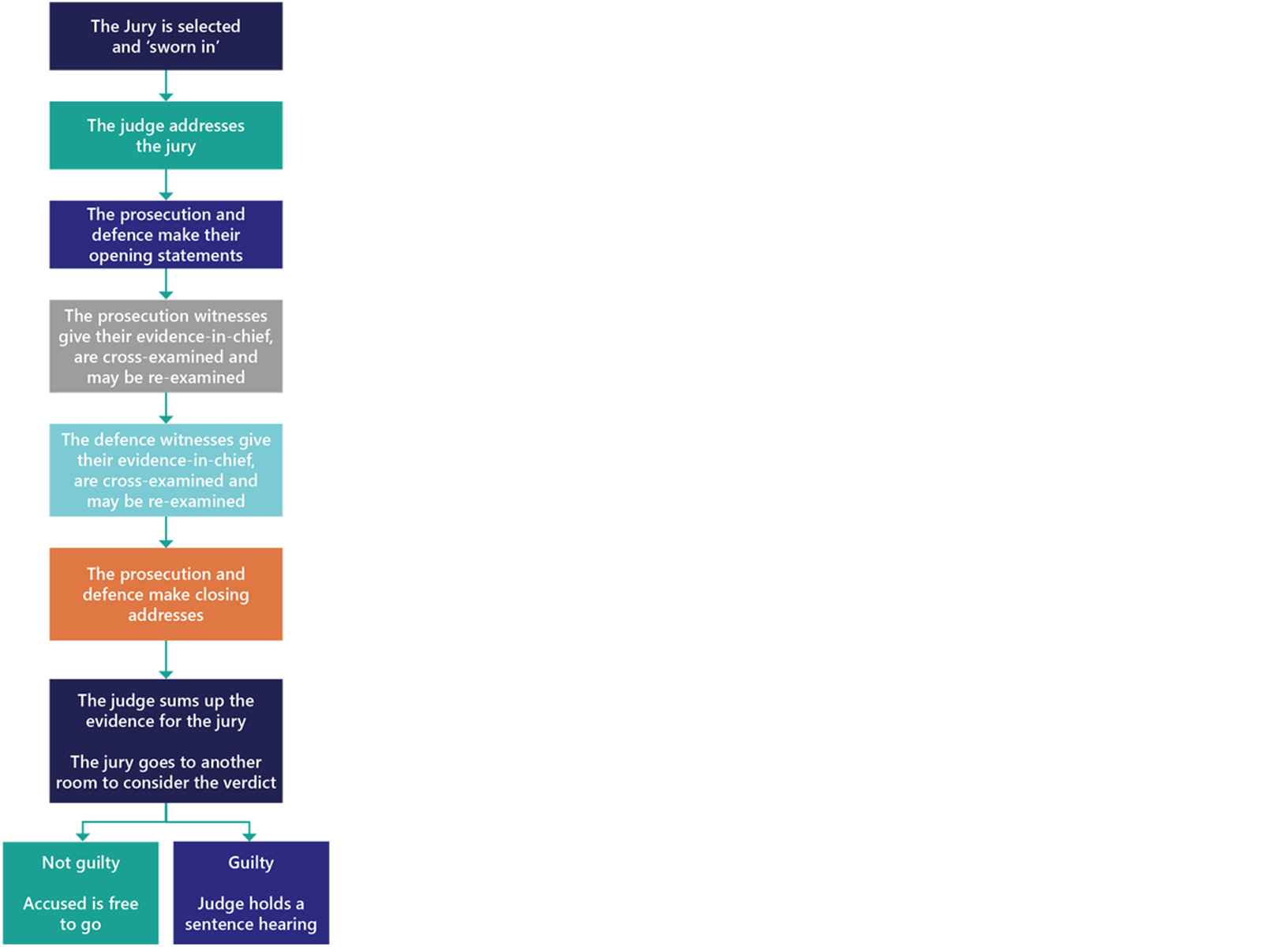What happens in a trial?
Criminal trials in the District and Supreme Courts are before a judge and a jury – although both the prosecution and defence can apply for a trial by a judge only.
The prosecution is responsible for proving beyond reasonable doubt that the accused committed the offence/s they have been charged with.
(See Prosecutions in the Local Court for what happens in Local Court hearings.)

Before the trial
The first time the accused appears in the District or Supreme Court after being committed for trial, each charge is read out to them and they are asked again to plead. This is called an ‘arraignment’.
If the accused pleads ‘not guilty’ to any charge, the court will set the trial date. It will usually be at least several months away.
Before the trial starts the prosecution and defence lawyers will attend court a number of times for what are called ‘pre-trial conferences’ or ‘call-overs’. Victims and other witnesses do not to have to attend these. If the accused is in custody, they will usually appear via AVL.
If the accused changes their plea to ‘guilty’ at their arraignment, a date will be set for a sentence hearing.
Main steps in the trial
To follow are the main steps in a criminal trial by jury in the District or Supreme Court in NSW:
- the 12 members of the jury are selected from a larger group of potential jurors by drawing numbers from a box, and are sworn in
- the judge addresses the jury about the trial. This usually includes explaining the jury’s role, the trial process, the need for the prosecution to prove the case ‘beyond reasonable doubt’, and the main issues in the case, if they are known
- the ODPP prosecutor (the prosecution) makes an opening statement about the case against the accused
- the accused’s lawyer (the defence) may also make an opening statement
- the prosecution calls its witnesses. Each witness gives their evidence-in-chief, then is cross-examined by the defence. The prosecution may then re-examine the witness, and the judge may also ask some questions (see Going to court and giving evidence)
- the defence calls its witnesses. The accused does not have to give evidence but if they are going to it will be as a witness for the defence. The defence witnesses give their evidence-in-chief and are cross-examined by the prosecution. The defence may then re-examine the witnesses, and the judge may ask them some questions
- if genuine questions are raised at any time about whether the accused is fit to stand trial, the matter will follow a different path (see Crimes involving mental illness or impairment)
- the prosecution makes its closing address to the jury
- the defence makes its closing address to the jury
- the judge sums up the evidence for the jury
- the jury members go into another room to consider whether the accused is guilty or not guilty. When they have all reached the same decision, they return with the verdict (In some cases, the court will accept the verdict of the majority of jurors.)
- if the verdict is ‘not guilty’, the accused is free to go. This is called an acquittal and cannot be appealed
- if the verdict is ‘guilty’, the judge will sentence the accused, usually on a later day.
Sometimes the jury is ‘hung’, which means the members of the jury can’t agree on a verdict. If this happens, the ODPP will consider whether to run the trial again, before a new jury. We will talk to the victim and the police officer in charge before making this decision.
